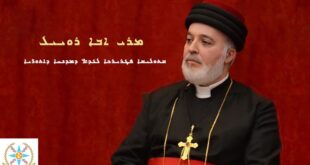AINA) — Nobel Prize in literature to Orhan Pamuk will strongly divide the public opinion in Turkey. His liberalism is more for public consumption to the west of Bosporus strait. The Armenian, Assyrian and Greek Genocide (1915-1917) during the Young Turk government in Ottoman Empire is too well documented to be denied by Turkey. There is an Armenian National Institute in Washington to study the Genocide. 1.5 Armenians, 750,000 Assyrians and 400,000 Greeks — all Christians — were killed. It was first brought to light by Henry Morgenthau, Senior, the US ambassador to the Ottoman Empire from 1913-1916. The Turkish government tries to attribute these deaths to hunger, pestilence and the turmoil of World War I — which seems to have affected only Christians — rather than genocide. But, of late, several Turkish scholars have broken their silence and spoken on the issue.
But to speak of the Genocide with regard to Turkey is like trimming the leaves but overlooking the roots. Is it not a fact that there was not a single Turk in today’s Turkey before 1050? Has this nation of 67 million materialized in north-east Mediterranean without any genocide or displacement of population? The homeland of Turks is not Turkey; but Turkmenistan in Central Asia. Before the hostile advent of Turks in the region, the territory belonged to the Byzantine Empire. It had pronounced Hellenic connection dating back to 1100 B.C. It was referred to as Anatolia, or the land of sunrise, in Greek. The Ionian School of Greek Philosophy arose from its soil; in 800 B.C., 12 of Ionian Greek cities were organized in Ionian League. Greeks continued to live in Smyrna (Izmir) until 1922, when they were massacred and driven out.
Byzantine Emperor Romanus IV lost most of Anatolia (Asia Minor) to Turks in 1071 in the battle of Manzikert. Exactly five hundred years later in 1571, the Holy League cobbled by Pope Pius V stonewalled Turks in sea-battle of Lepanto. Islam in the Balkans, forcibly introduced by the Turks, has made the region the tinderbox of Europe. With Kosovo surfacing as a sovereign nation in the near future, and western Macedonia subsumed into ‘Greater Albania’, the historic Turkish dagger planted in the heart of Europe is working its way even after five hundred years.
The territory of Turkey, less than five percent of inside Europe, is not proof of its Europeanness, it is a residue of the Ottoman Empire’s historic aggression. The bulk of Turkey is an oriental Islamic country. Why should Europe recognize the phoney Europeanness of Turkey in the EU, when Kemal Ataturk changed all the historic Greek city names into Turkish viz. Constantinople to Istanbul, Smyrna to Izmit and Nicea to Iznik? History can’t be undone; but nor can future be done away with.
By Priyadarsi Dutta
Priyadarsi Dutta is based in New Delhi and writes for the multi-edition newspaper The Pioneer.
 Assyrian Democratic Organization ADO
Assyrian Democratic Organization ADO






